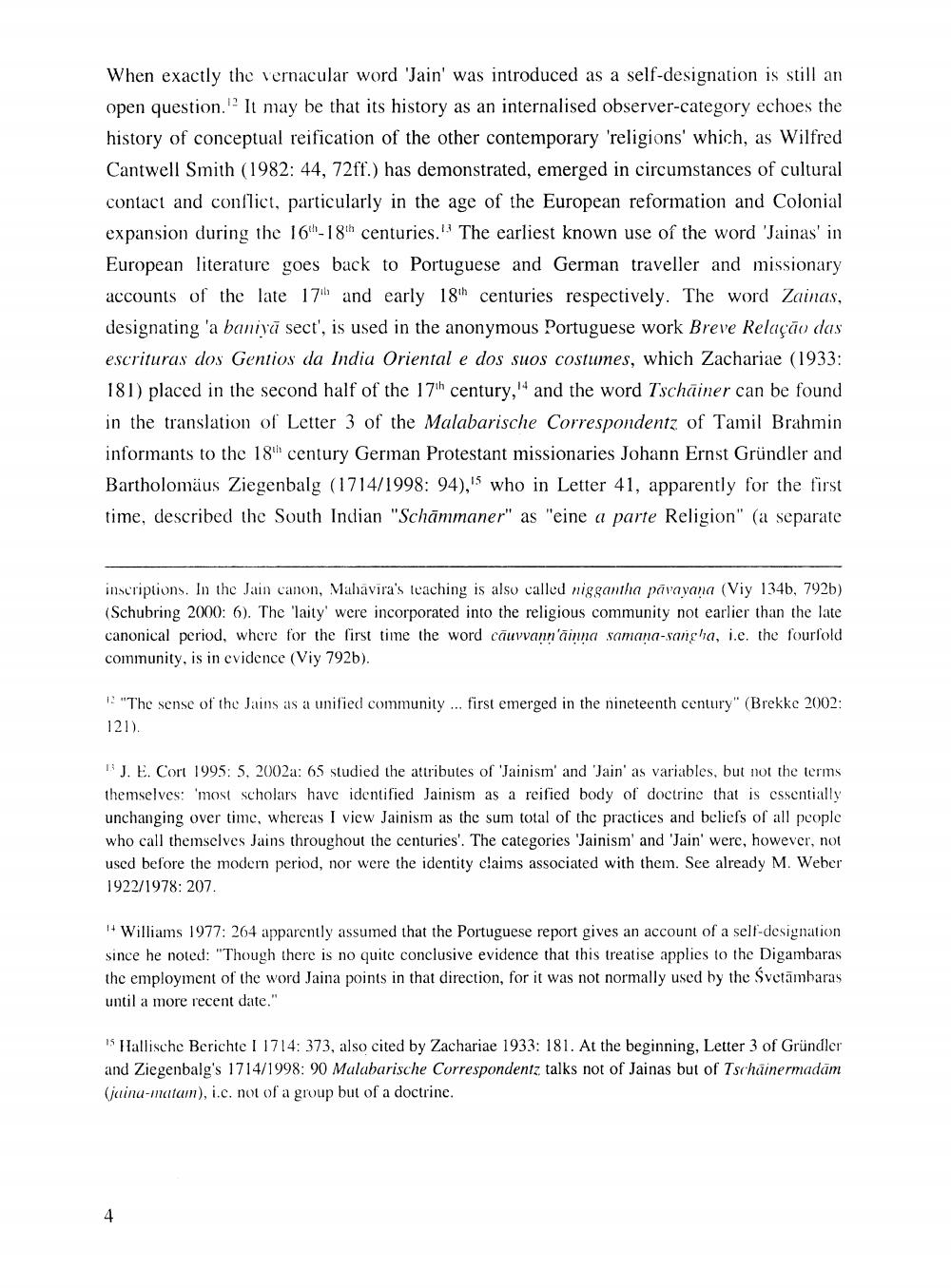________________
When exactly the vernacular word 'Jain' was introduced as a self-designation is still an open question. It may be that its history as an internalised observer-category echoes the history of conceptual reification of the other contemporary 'religions' which, as Wilfred Cantwell Smith (1982: 44, 72ff.) has demonstrated, emerged in circumstances of cultural contact and conflict, particularly in the age of the European reformation and Colonial expansion during the 16h-18th centuries. The earliest known use of the word 'Jainas' in European literature goes back to Portuguese and German traveller and missionary accounts of the late 17 and early 18th centuries respectively. The word Zainas, designating 'a baniyā sect', is used in the anonymous Portuguese work Breve Relação das escrituras dos Gentios da India Oriental e dos suos costumes, which Zachariae (1933: 181) placed in the second half of the 17ih century, and the word Tschainer can be found in the translation of Letter 3 of the Malabarische Correspondentz of Tamil Brahmin informants to the 18th century German Protestant missionaries Johann Ernst Gründler and Bartholomäus Ziegenbalg (1714/1998: 94),15 who in Letter 41, apparently for the first time, described the South Indian "Schāmmaner" as "eine a parte Religion" (a separate
inscriptions. In thc Jain canon, Mahavira's leaching is also called niggantha pāvayana (Viy 134b, 792b) (Schubring 2000: 6). The 'laity' were incorporated into the religious community not earlier than the late canonical period, where for the first time the word cāuvvann'āinna samana-sangha, i.e. the fourfold community, is in evidence (Viy 792b).
1. "The sense of the Jains as a unified community ... first emerged in the nineteenth century" (Brekke 2002:
121).
13 J. E. Cort 1995: 5, 2002a: 65 studied the attributes of 'Jainism' and 'Jain' as variables, but not the terms themselves: 'most scholars have identified Jainism as a reified body of doctrine that is essentially unchanging over time, whereas I view Jainism as the sum total of the practices and beliefs of all people who call themselves Jains throughout the centuries'. The categories 'Jainism' and 'Jain' were, however, not used before the modern period, nor were the identity claims associated with them. See already M. Weber 1922/1978: 207.
H Williams 1977: 264 apparently assumed that the Portuguese report gives an account of a self-designation since he noted: "Though there is no quite conclusive evidence that this treatise applies to the Digambaras the employment of the word Jaina points in that direction, for it was not normally used by the Svetāmharas until a more recent date."
15 Hallische Berichte I 1714: 373, also cited by Zachariae 1933: 181. At the beginning, Letter 3 of Gründler and Ziegenbalg's 1714/1998: 90 Malabarische Correspondentz talks not of Jainas but of Tschainermadām jainu-matam), i.c.not of a group but of a doctrine.




